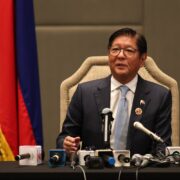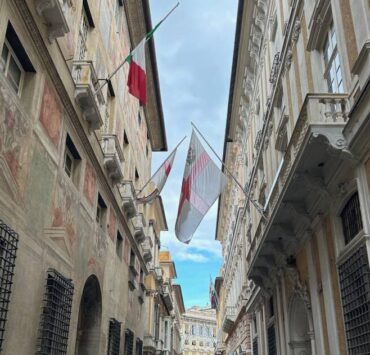Glorious operatic singing in ‘Progetto Puccini’
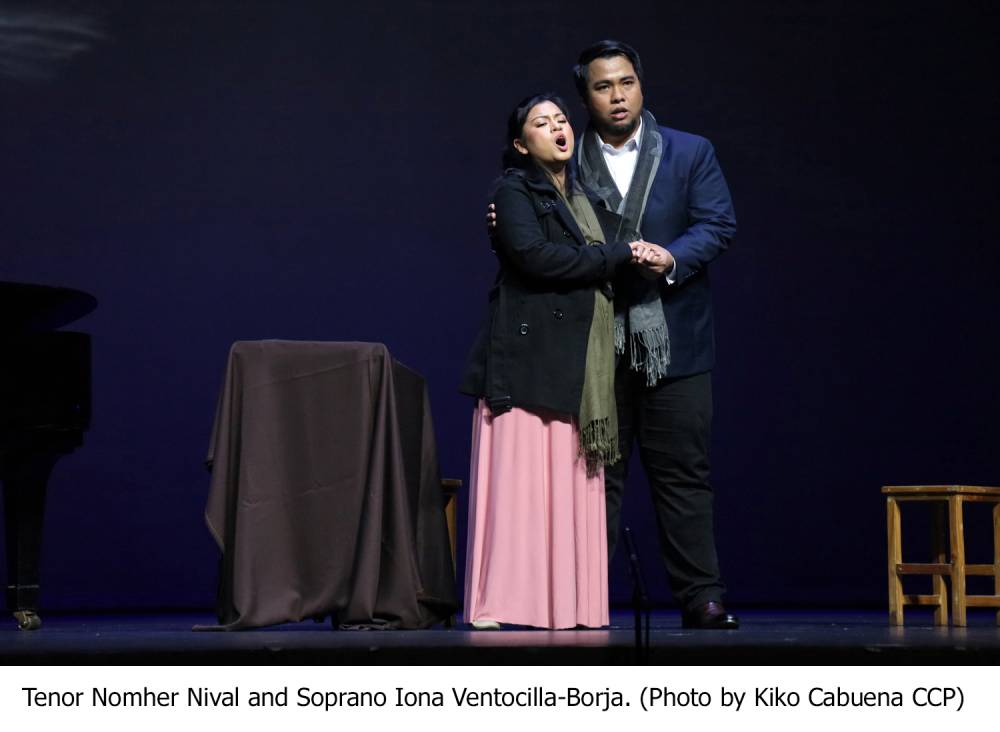
Glorious operatic singing marked the culminating concert of “Progetto Puccini” (Puccini Project), thrilling the opera lovers who came in droves to the Metropolitan Manila Theater to watch recently.
Participants of the four-day master classes on operatic acting and singing took turns singing arias in the first half of the concert, which preceded the more challenging staging of “Scenes and Arias” from Giacomo Puccini’s well-loved opera, “La Boheme.”
The master classes were held daily at the Met on Oct. 1 to Oct. 4, conducted by the celebrated tenor turned conductor Fabio Armiliato; Mariano Panico, a musical director and voice teacher; and Lorena Zaccaria as diction coach. They took turns teaching vocal technique and production, diction, interpretation and stagecraft. A mini recital in the afternoon capped what had been done and learned for the day.
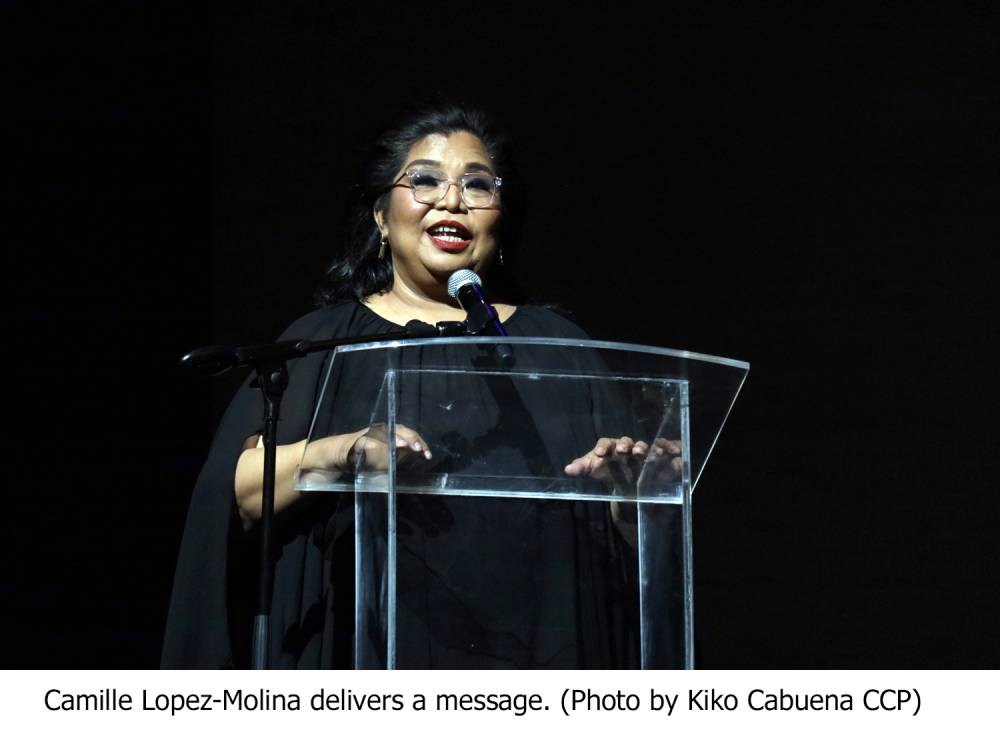
“Progetto Puccini” came into being largely through the efforts of John Florencio, a celebrated repetiteur in Europe who is the international liaison of the Arturo Toscanini Association of Taranto, Italy. He brought the idea to Irene Marcos Araneta, herself a musician and a patroness of musical arts, who gladly accepted the role as executive producer of the project. Araneta, in turn, had to seek the assistance of Camille Lopez-Molina of Viva Voce Voice Lab as the project’s artistic director.
The project, Araneta said, is an “affirmation of the country’s commitment to Filipino musicians” and a “celebration of the rich cultural synergy between the Philippines and Italy.”
Glorious toast
Indeed, the project is a timely homage to the 100th death anniversary of the celebrated Italian opera composer Giacomo Puccini. In addition, it aims to celebrate Filipino musicality especially in opera, and nurture the growth of a new generation of opera singers and audiences alike.
Various cultural agencies and organizations were tapped for the successful implementation of the project: the Cultural Center of the Philippines (CCP), National Commission for Culture and the Arts (NCCA), National Music Competitions for Young Artists (Namcya) and Filipinas Opera Society Foundation.
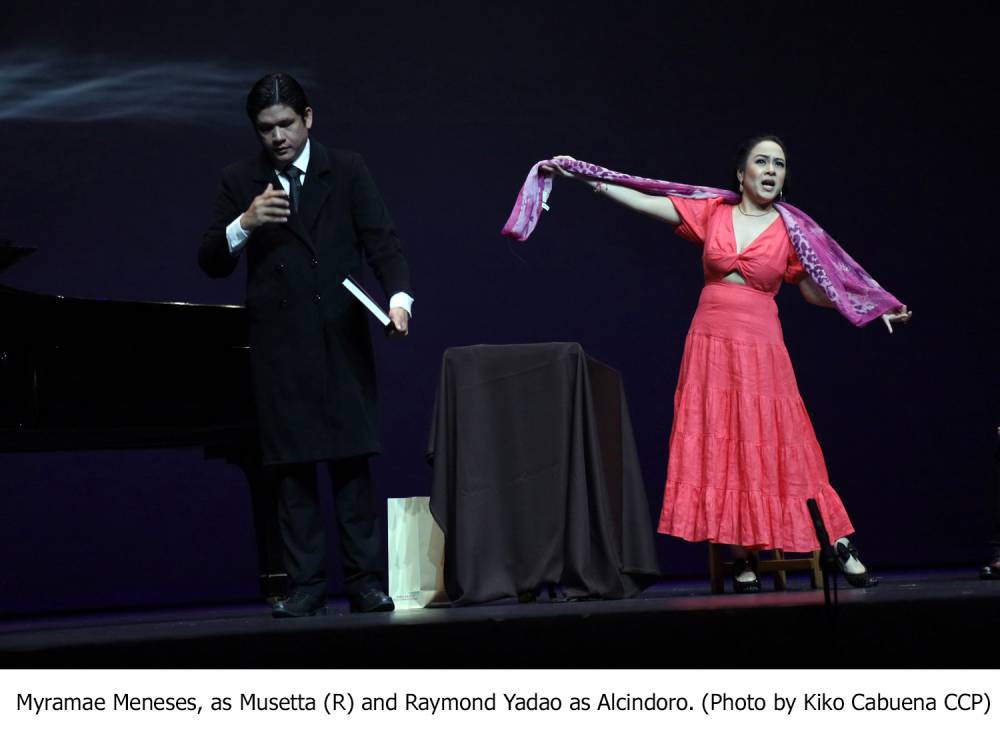
The concert was a glorious toast to the bel canto tradition of opera singing, participated in by a new generation of singers who had training both in conservatories and private studios, and winners in vocal competitions like the Namcya.
The first part of the program featured some of the participants’ solo singing of arias from different operas. Lopez-Molina prefaced it with a note about what operatic singing is all about. She emphasized that operatic singing does not need a microphone to amplify the voice. Trained operatic voices, she said, are capable of blending with the acoustics of the hall for the appreciation of the sound by the entire audience. Educating the public this way about opera is a must for it to thrive and be permanently rooted in the musical-cultural fabric of Philippine life.
Vocal projection was ably demonstrated by the singers. In addition, singing was honed in the Italian tradition that requires clear diction, legato passages and articulate phrasing.
The singers and the arias they sang were: Jomel Garcia, tenor, “Lamento di Federico,” from “L’Arlesiana” by Cilea; Stefanie Quintin-Avila, soprano, “Ah non credea mirarti,” from La Sonambula by Bellini; Karl Arnold Saret, baritone, “Deh vieni ala finestra,” from “Don Giovanni,” by Mozart; Nerissa de Juan, soprano, “Je dis que rien ne m’epouvante,” from “Carmen,” by Bizet; Ervin Lumauag, tenor, “Una furtiva lagrima,” from “L’elisir d’amore,” Donizetti; and Angeli Benipayo, soprano, “Je veux vivre,” from “Romeo et Juliette,” Gounod.
At the piano was Lopez-Molina, whose familiarity with the pieces as a foremost vocal pedagogue provided a tight and enjoyable collaboration.
Absorbing singing
In the second half of the program, one relished the staging of “La Boheme” through “Scenes and Arias.” The minimalist staging was done with aplomb. Singing was absorbing, and the acting convincing. At once, the Filipino’s capability for operatic singing and acting was demonstrated. The collaborating pianist was Oliver Salonga.
(This attests to the glorious operatic tradition in the country, nurtured collectively by a great number of Filipino operatic singers who are just too many to be mentioned here. It is enough to say that they had graced not only the local stage, but also the great operatic stages of the world from the turn of the 20th century to the present!)
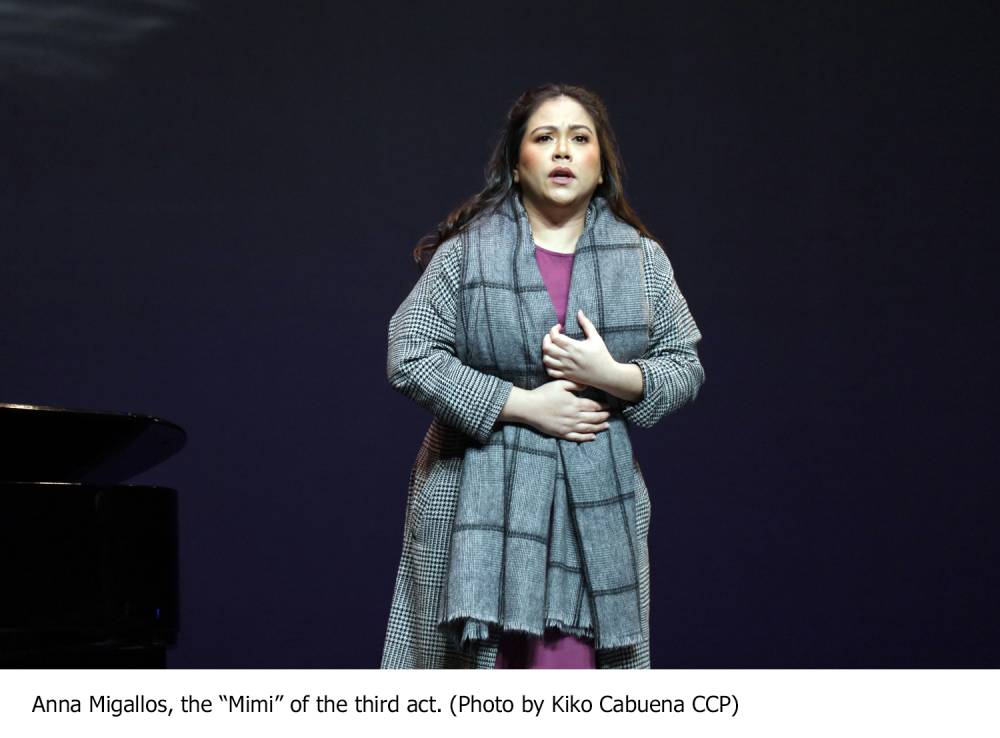
There were two Mimis, one each for the first and second acts and the third and fourth acts. Both were astoundingly good. Iona Ventocilla-Borja rendered flawlessly “Si, mi chiamano Mimi” in the first act. Seated on a chair, she rose and stood in the portion, “ma quando vien lo sgelo (but when spring comes),” which called for great expression. One appreciated her well-projected voice both in the lower as well as the middle registers. And, of course, in the moving duet, the ringing high note sounded off-stage brilliantly in “O soave fanciulla,” which she sang with tenor Nomher Nival as Rodolfo.
Nival essayed his aria “Che gelida manina” with aplomb, disclosing, a well-honed vocal instrument ready for more operatic roles.
Myramae Meneses, as Musetta, sang the catchy “Quando m’en vo” in the company of the bohemians, in Café Momus, to the great delight of the audience. Raymond Yadao essayed the role of Alcindoro, the wealthy admirer of Musetta.
Convincing flair
The other Mimi, Anna Migallos, rendered her parting aria, “Donde lieta usci,” in the third act with convincing flair, displaying a thick, even texture of her voice.
Roby Malubay, as Colline, delivered his aria, “Vecchia zimarra,” with melancholic earthiness, his voice being so well-rounded. And Carlo Falcis as Marcello was a fine baritone capable of showing the lyric sheen of his voice. The fine ensemble playing of these three gentlemen, including Nival in the opening number of the first act, truly presaged an enjoyable listening. Throughout, superb singing marked by intelligent movement and acting unfolded to the great enjoyment of the audience.
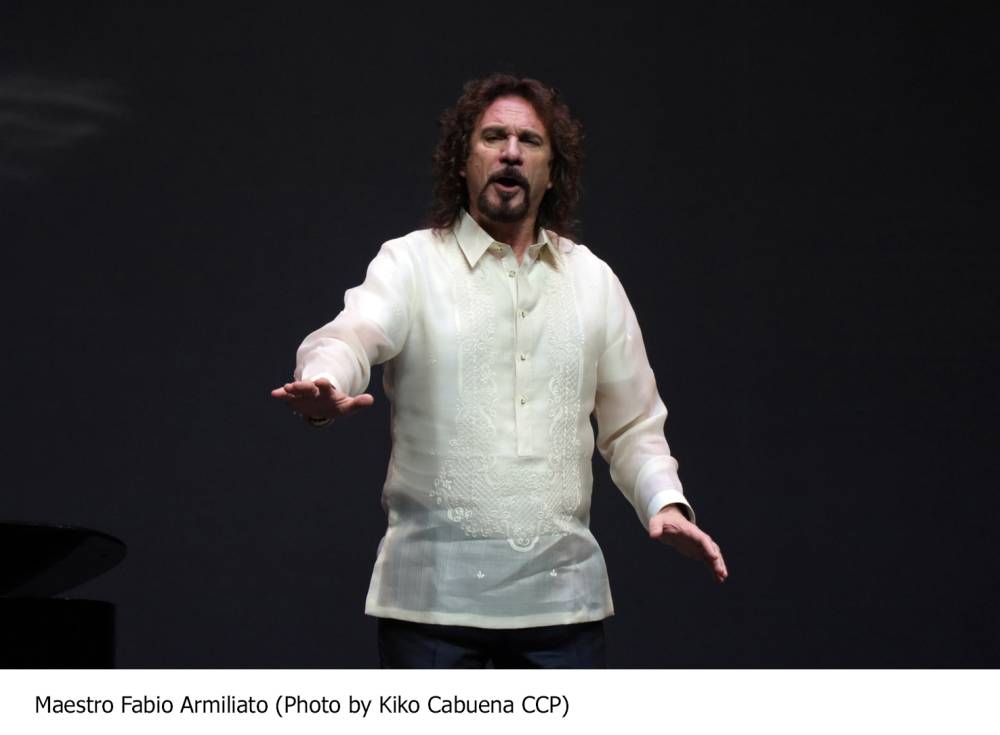
They were also delighted by the singing from the Italian faculty that followed.
Zaccarria sang “Sola, perdutta abbandonata,” from Puccini’s “Manon Lescaut,” with Lopez-Molina collaborating on the piano, and Abelardo’s immortal “Mutya ng Pasig,” with John Florencio on the piano. Armilato sang “E lucevan le stele,” from Puccini’s “Tosca,” again with Lopez-Molina on the piano.
Off stage, Lopez-Molina said that the second phase of the program will be the staging of the said opera at the Teatro Orfeo in Taranto, in the middle of next year. The same cast will use the Filipino translation of “La Boheme” by National Artist for Theater and Literature Rolando Tinio. This collaboration, she said, aims to strengthen the cultural ties between Italian and Filipinos.




